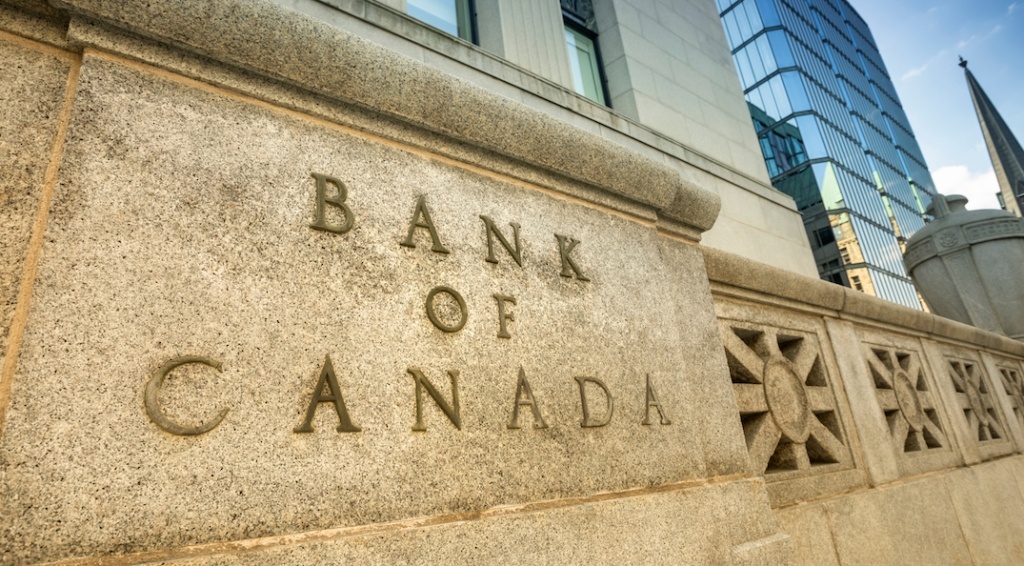The Relationship Between Crypto Adoption, Education and Regulation

The world is currently gravitating towards digital-inclined technologies to improve the way we communicate and transact. Therefore, it comes as no surprise that cryptocurrency remains a crucial part of the unfolding story in the financial industry. This is mainly due to its efficient infrastructures designed to enable fully digital transactions without any of the restrictions associated with traditional processes. One will expect that the arguments for cryptocurrency are enough to establish it at the heart of the financial revolution. In contrast, the crypto mainstream adoption movement has had its fair share of setbacks. One of such is the lack of education resources that encapsulate the fast-paced crypto industry.
In this article, I will explore the current state of crypto adoption as well as the hurdles limiting the growth of the landscape.
The Progress Made So Far

There are reasons to applaud what the crypto industry has achieved in its short history. The landscape has undergone various changes in the last couple of years. And these changes have positioned cryptocurrency and blockchains as the undisputed technology of choice in the financial sector. For one, the influx of the involvement of institutional investors is a testament to the fact that the market is becoming mature. The same is true for the myriad of partnerships or collaborations that have resulted in a horde of hybrid solutions designed to facilitate channels to enter and exit the crypto market effortlessly.
Although developers and entrepreneurs are working on different crypto concepts and targeting unique goals, the mission that these stakeholders share is the normalization of crypto-based infrastructures. They want more people to interact with the budding market just as they would with traditional alternatives. While this is straightforward, crypto involves a high degree of technicalities that have kept some potential users at bay. Since its introduction, crypto has found it extremely difficult to shed the notion that it is too intricate and only suitable for millennials and technology-inclined individuals. For a technology looking to replace the existing financial system, this is unacceptable, and it has limited the purview of the crypto industry.
As such, it is imperative to introduce easy-to-use solutions that appeal to a broad array of users with different levels of crypto experience. More importantly, it is vital to continue to develop educational materials to demystify cryptocurrency and improve the public’s understanding of the technology and its associated concepts. eToro, in a study conducted in 2018, noted that education remains a primary debacle for crypto growth:
“Across the board, education is a key barrier preventing people from investing in cryptocurrency. Almost half (44 percent) of online investors state that education is the main reason for not trading crypto. This is true even among Millennials, who are more knowledgeable about the asset class than other generations. Forty percent of Millennials who do not invest in crypto assets say that the lack of education is the main reason they do not invest. Currently, there are limited resources when it comes to learning about crypto assets. Investors who are invested in crypto mostly lean on observing their online trading platform (67 percent) and social media (43 percent) for guidance. Among social media channels, YouTube and online crypto chat forums are most used.”
According to Guy Hirsch, U.S. managing director, eToro, it is crucial to aid the crypto narrative by providing a robust system for crypto education. Hirsch stated:
“Late 2018 has seen the cryptocurrency market take a huge tumble, but that has not stymied investors’ interest in the asset class and its potential. Online investors are still keeping their eye on cryptocurrencies, but this survey revealed that there is a serious lack of educational resources available to those who would like to invest in or learn more about crypto. As we move toward a future where assets will become increasingly tokenized, it’s important to give investors access to the resources they need to invest in the assets they want and truly consider cryptoassets as part of their long-term investment plan.”
Although this sentiment has been a mainstay in the crypto scene, industry participants are yet to deliver solutions good enough to eliminate the education deficit. Perhaps, this is due to the ever-growing nature of crypto as a concept. For instance, we only got introduced to “Automated Markets Maker” as a core liquidity optimizing system for DeFI. The non-stop generation of new systems and processes, especially in the emerging sectors of the crypto industry, makes it almost impossible to keep up with this high-paced level of growth. And this reflects in the limited knowledge-based infrastructures available to crypto participants.
Cointelegraph Consulting highlighted this predicament in a 2020 survey tagged “DeFi Adoption 2020: A Definitive Guide to Entering the Industry.” The survey noted that the increase of the complexity of the DeFI landscape is inevitable, so long competition continues to surge:

“Releases of newer versions of DeFi platforms are expected to grow in complexity. The core reason for this is that investors are looking for higher yields, and this sparks competition. The platforms have to become increasingly creative to design instruments that deliver growing returns. Although the instruments are becoming more complex, the top 3 drivers of platform adoption according to the DeFi projects surveyed in this report are listed below. User experience, cost efficiency, and education are must-haves for every platform aspiring to increase the number of users.”
Despite the increasingly complex nature of DeFI, experts still believe that it will remain at the forefront of the digital finance conversation. According to Alexey Shadrin, a co-founder and the CEO of Evercity, progressive movements like the push to reduce climate change will continue to spur the demand for blockchain-based financial solutions:
“The request for more sustainable financing options comes mainly from the new generations — more than 2/3 of millennials ask their financial managers to provide sustainable investing options. Considering that blockchain is better widespread among younger generations, we forecast a significant rise in sustainability and climate-related blockchain-powered fintech in both B2B and B2C people-centric solutions.”
True to Shadrin’s claims, the number of crypto holders has increased exponentially in the last couple of years. A recent study carried out by the Cambridge Centre for Alternative Finance revealed that over 100 million individuals own either bitcoin or any other blockchain-based digital assets – and this does not include individuals using self-hosted wallets. In contrast, the number of crypto users was 35 million in 2018. Per the information contained in the report, the significant increase is partly due to the influx of exchanges with KYC requirements:
“This 189% increase in users may be explained by both a rise in the number of accounts (which increased by 37%), as well as a greater share of accounts being systematically linked to an individual’s identity, allowing us to increase our estimate of minimum user numbers associated with accounts on each service provider.”
There Is More to The Relationship Between Crypto and Education

As explained above, illiteracy is perhaps the most potent limitation of crypto technology. While this is a given, new findings show that there is more to the relationship between education and crypto adoption. Per a survey by Canada’s central bank, a majority of Canadians knowledgeable about finance and bitcoin do not own any digital asset. Instead, Canadians with low finance literacy scores are twice as likely to own crypto assets. The bank argues that Canadians with a basic understanding of finances tend to factor in the risks associated with crypto investments and often decide to stay clear of the crypto market:

Canada’s central bank
“A large part of the cryptocurrency market [is compromised] of unsophisticated investors with lower financial literacy skills. These investors are likely to overestimate the reward prospects in cryptocurrencies and underestimate the risk involved in related investment.”
One could argue that the same factors are propelling the crypto narrative in Africa, a region that is far from establishing the level of crypto education systems available in other continents. Despite the lack of robust crypto awareness programs, a handful of Africa countries feature prominently in crypto adoption metrics. And while this narrative may seem to fit in nicely into the Canadian central bank’s findings, there is more to the increase in crypto exposure in Africa. Chainalysis discovered that Africans are increasingly exploring cryptocurrencies because of economic uncertainties and currency instability. According to the crypto analytic firm, the number of transfers to and from Africa surpassed 600,000 in June:
“Africa has the smallest cryptocurrency economy of any region we analyze in this report, with just $8.0 billion worth having been received and $8.1 billion sent on-chain in the last year. However, that relatively small amount of activity is creating life-changing value for users in the region facing economic instability, offering low-fee remittances and an alternative way to save.”
The firm added that crypto has become the medium of choice for remitting funds from developed regions to the African continent:
“Roughly $562 million worth of cryptocurrency was transferred directly from overseas addresses to ones based in Africa in retail sized payments. While it’s highly unlikely that all of this represents remittances from expats, many regions with high concentrations of African migrants, such as North America, Western Europe, and East Asia, are well-represented. But maybe just as important as overseas remittances are intra-region remittances between African countries, which have historically been made difficult by large fees.”
Regulation Is Equally Important

However, the explosive rate of crypto adoption in this region comes with risks, especially since a majority of African countries are yet to provide regulatory frameworks for this growing economy. Needless to say, this promotes scam-related crypto investments and fraudulent businesses. Unlike Africa, regulators in other regions are working expeditiously to finetune and introduce laws that capture the business models of the crypto industry. In one of its latest attempts to achieve this, the European Commission (EC) recently opted to provide more legal clarity on matters relating to cryptocurrency and blockchain technology. In a publication released on the 24th of September, the EC revealed that it is looking to create regulatory frameworks that will create synergies between the budding crypto ecosystem and the financial sector. By doing so, it hopes to provide a more conducive environment for crypto companies and protect investors as well as consumers. The publication reads:

“Based on broad public consultations and the Digital finance outreach, the European Commission adopted on 24 September 2020 a digital finance package, including a digital finance strategy and legislative proposals on crypto-assets and digital resilience, for a competitive EU financial sector that gives consumers access to innovative financial products while ensuring consumer protection and financial stability. The package supports the EU’s ambition for a recovery that embraces the digital transition. Digital financial services can help modernize the European economy across sectors and turn Europe into a global digital player. By making rules more digital-friendly and safe for consumers, the Commission aims to leverage synergies between high innovative start-ups and established firms in the financial sector.”
A similar development is brewing in the U.S., as the congress just introduced two new bills designed to provide clarity for digital assets and crypto exchanges. The first, sponsored by Congressman Tom Emmer (R-NC), is the “Securities Clarity Act.” This bill offers changes to the fundamentals of investment contracts and helps to identify when they qualify as securities. For Tom Emmer, it is about time for the government to accept the disruptive power of blockchain technology and adjust to the demands of this industry accordingly. Emmer stated:
“We have seen regulations hinder the progress of blockchain-based technologies. The development of these vital technologies should not be impacted by government’s inability to adjust.”
The congressman, while explaining the modalities of this new bill, stressed that it would advance the blockchain and crypto markets and, at the same time, ensure the safety of investors and consumers. Emmer added:
“The Securities Clarity Act will allow America to compete in this new advancing space without sacrificing the consumer and investor protections that have made our capital markets the strongest in the world. There are companies that have followed our current rules of the road and managed to navigate our securities regulations. Now, they deserve certainty from our regulators when offering their digital asset to the public.”
As more regulators decipher new ways to accommodate the blockchain and crypto industry and enforce standards to influence the quality of products, the crypto adoption narrative will continue to take root.
